Shi-Min Hu
Recovering Complete Actions for Cross-dataset Skeleton Action Recognition
Oct 31, 2024



Abstract:Despite huge progress in skeleton-based action recognition, its generalizability to different domains remains a challenging issue. In this paper, to solve the skeleton action generalization problem, we present a recover-and-resample augmentation framework based on a novel complete action prior. We observe that human daily actions are confronted with temporal mismatch across different datasets, as they are usually partial observations of their complete action sequences. By recovering complete actions and resampling from these full sequences, we can generate strong augmentations for unseen domains. At the same time, we discover the nature of general action completeness within large datasets, indicated by the per-frame diversity over time. This allows us to exploit two assets of transferable knowledge that can be shared across action samples and be helpful for action completion: boundary poses for determining the action start, and linear temporal transforms for capturing global action patterns. Therefore, we formulate the recovering stage as a two-step stochastic action completion with boundary pose-conditioned extrapolation followed by smooth linear transforms. Both the boundary poses and linear transforms can be efficiently learned from the whole dataset via clustering. We validate our approach on a cross-dataset setting with three skeleton action datasets, outperforming other domain generalization approaches by a considerable margin.
CharacterGen: Efficient 3D Character Generation from Single Images with Multi-View Pose Canonicalization
Feb 28, 2024Abstract:In the field of digital content creation, generating high-quality 3D characters from single images is challenging, especially given the complexities of various body poses and the issues of self-occlusion and pose ambiguity. In this paper, we present CharacterGen, a framework developed to efficiently generate 3D characters. CharacterGen introduces a streamlined generation pipeline along with an image-conditioned multi-view diffusion model. This model effectively calibrates input poses to a canonical form while retaining key attributes of the input image, thereby addressing the challenges posed by diverse poses. A transformer-based, generalizable sparse-view reconstruction model is the other core component of our approach, facilitating the creation of detailed 3D models from multi-view images. We also adopt a texture-back-projection strategy to produce high-quality texture maps. Additionally, we have curated a dataset of anime characters, rendered in multiple poses and views, to train and evaluate our model. Our approach has been thoroughly evaluated through quantitative and qualitative experiments, showing its proficiency in generating 3D characters with high-quality shapes and textures, ready for downstream applications such as rigging and animation.
Semantic-Aware Transformation-Invariant RoI Align
Dec 15, 2023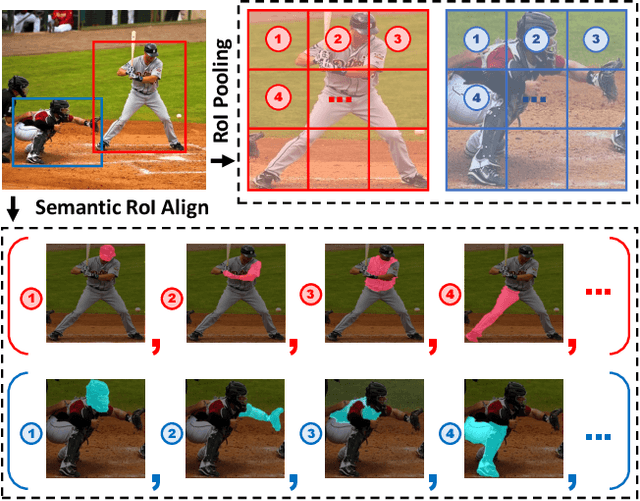

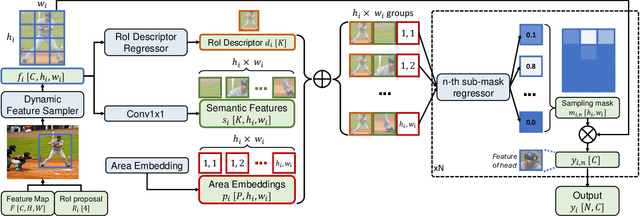
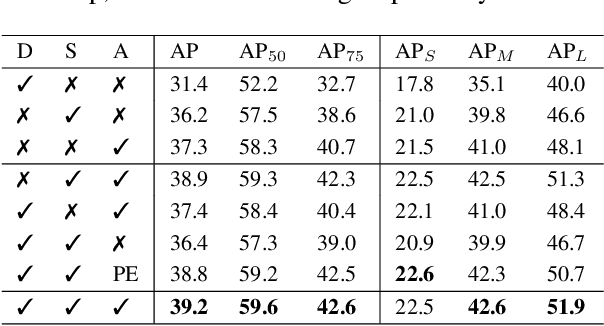
Abstract:Great progress has been made in learning-based object detection methods in the last decade. Two-stage detectors often have higher detection accuracy than one-stage detectors, due to the use of region of interest (RoI) feature extractors which extract transformation-invariant RoI features for different RoI proposals, making refinement of bounding boxes and prediction of object categories more robust and accurate. However, previous RoI feature extractors can only extract invariant features under limited transformations. In this paper, we propose a novel RoI feature extractor, termed Semantic RoI Align (SRA), which is capable of extracting invariant RoI features under a variety of transformations for two-stage detectors. Specifically, we propose a semantic attention module to adaptively determine different sampling areas by leveraging the global and local semantic relationship within the RoI. We also propose a Dynamic Feature Sampler which dynamically samples features based on the RoI aspect ratio to enhance the efficiency of SRA, and a new position embedding, \ie Area Embedding, to provide more accurate position information for SRA through an improved sampling area representation. Experiments show that our model significantly outperforms baseline models with slight computational overhead. In addition, it shows excellent generalization ability and can be used to improve performance with various state-of-the-art backbones and detection methods.
DiffFacto: Controllable Part-Based 3D Point Cloud Generation with Cross Diffusion
May 04, 2023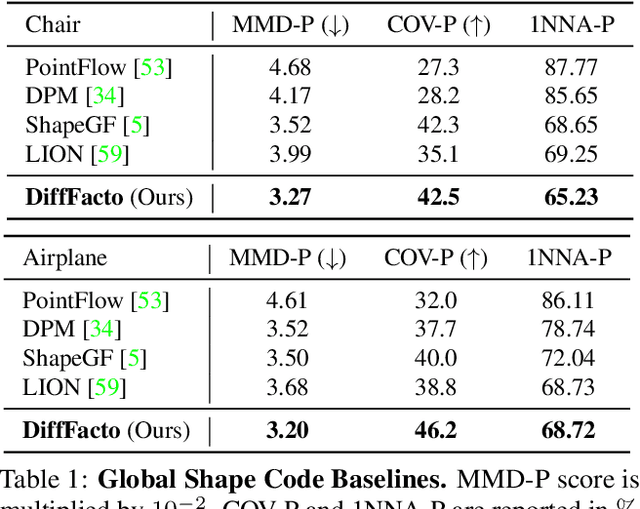


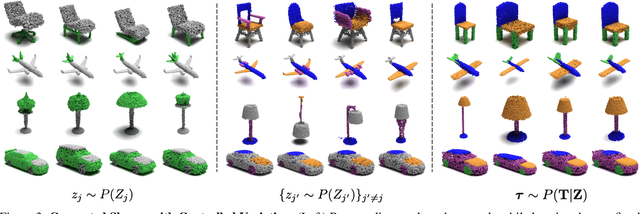
Abstract:While the community of 3D point cloud generation has witnessed a big growth in recent years, there still lacks an effective way to enable intuitive user control in the generation process, hence limiting the general utility of such methods. Since an intuitive way of decomposing a shape is through its parts, we propose to tackle the task of controllable part-based point cloud generation. We introduce DiffFacto, a novel probabilistic generative model that learns the distribution of shapes with part-level control. We propose a factorization that models independent part style and part configuration distributions and presents a novel cross-diffusion network that enables us to generate coherent and plausible shapes under our proposed factorization. Experiments show that our method is able to generate novel shapes with multiple axes of control. It achieves state-of-the-art part-level generation quality and generates plausible and coherent shapes while enabling various downstream editing applications such as shape interpolation, mixing, and transformation editing. Project website: https://difffacto.github.io/
Long Range Pooling for 3D Large-Scale Scene Understanding
Jan 17, 2023Abstract:Inspired by the success of recent vision transformers and large kernel design in convolutional neural networks (CNNs), in this paper, we analyze and explore essential reasons for their success. We claim two factors that are critical for 3D large-scale scene understanding: a larger receptive field and operations with greater non-linearity. The former is responsible for providing long range contexts and the latter can enhance the capacity of the network. To achieve the above properties, we propose a simple yet effective long range pooling (LRP) module using dilation max pooling, which provides a network with a large adaptive receptive field. LRP has few parameters, and can be readily added to current CNNs. Also, based on LRP, we present an entire network architecture, LRPNet, for 3D understanding. Ablation studies are presented to support our claims, and show that the LRP module achieves better results than large kernel convolution yet with reduced computation, due to its nonlinearity. We also demonstrate the superiority of LRPNet on various benchmarks: LRPNet performs the best on ScanNet and surpasses other CNN-based methods on S3DIS and Matterport3D. Code will be made publicly available.
SegNeXt: Rethinking Convolutional Attention Design for Semantic Segmentation
Sep 18, 2022
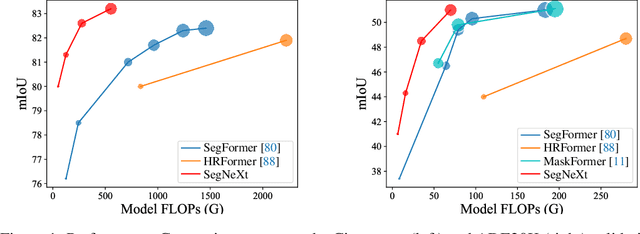
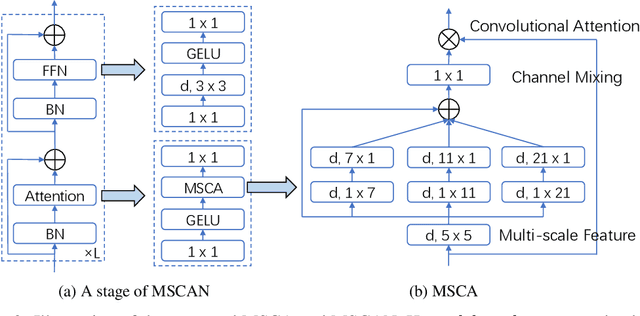

Abstract:We present SegNeXt, a simple convolutional network architecture for semantic segmentation. Recent transformer-based models have dominated the field of semantic segmentation due to the efficiency of self-attention in encoding spatial information. In this paper, we show that convolutional attention is a more efficient and effective way to encode contextual information than the self-attention mechanism in transformers. By re-examining the characteristics owned by successful segmentation models, we discover several key components leading to the performance improvement of segmentation models. This motivates us to design a novel convolutional attention network that uses cheap convolutional operations. Without bells and whistles, our SegNeXt significantly improves the performance of previous state-of-the-art methods on popular benchmarks, including ADE20K, Cityscapes, COCO-Stuff, Pascal VOC, Pascal Context, and iSAID. Notably, SegNeXt outperforms EfficientNet-L2 w/ NAS-FPN and achieves 90.6% mIoU on the Pascal VOC 2012 test leaderboard using only 1/10 parameters of it. On average, SegNeXt achieves about 2.0% mIoU improvements compared to the state-of-the-art methods on the ADE20K datasets with the same or fewer computations. Code is available at https://github.com/uyzhang/JSeg (Jittor) and https://github.com/Visual-Attention-Network/SegNeXt (Pytorch).
DeepPortraitDrawing: Generating Human Body Images from Freehand Sketches
May 04, 2022



Abstract:Researchers have explored various ways to generate realistic images from freehand sketches, e.g., for objects and human faces. However, how to generate realistic human body images from sketches is still a challenging problem. It is, first because of the sensitivity to human shapes, second because of the complexity of human images caused by body shape and pose changes, and third because of the domain gap between realistic images and freehand sketches. In this work, we present DeepPortraitDrawing, a deep generative framework for converting roughly drawn sketches to realistic human body images. To encode complicated body shapes under various poses, we take a local-to-global approach. Locally, we employ semantic part auto-encoders to construct part-level shape spaces, which are useful for refining the geometry of an input pre-segmented hand-drawn sketch. Globally, we employ a cascaded spatial transformer network to refine the structure of body parts by adjusting their spatial locations and relative proportions. Finally, we use a global synthesis network for the sketch-to-image translation task, and a face refinement network to enhance facial details. Extensive experiments have shown that given roughly sketched human portraits, our method produces more realistic images than the state-of-the-art sketch-to-image synthesis techniques.
Visual Attention Network
Mar 08, 2022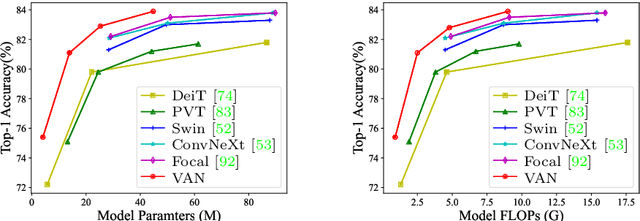



Abstract:While originally designed for natural language processing tasks, the self-attention mechanism has recently taken various computer vision areas by storm. However, the 2D nature of images brings three challenges for applying self-attention in computer vision. (1) Treating images as 1D sequences neglects their 2D structures. (2) The quadratic complexity is too expensive for high-resolution images. (3) It only captures spatial adaptability but ignores channel adaptability. In this paper, we propose a novel large kernel attention (LKA) module to enable self-adaptive and long-range correlations in self-attention while avoiding the above issues. We further introduce a novel neural network based on LKA, namely Visual Attention Network (VAN). While extremely simple, VAN outperforms the state-of-the-art vision transformers and convolutional neural networks with a large margin in extensive experiments, including image classification, object detection, semantic segmentation, instance segmentation, etc. Code is available at https://github.com/Visual-Attention-Network.
NeRF-SR: High-Quality Neural Radiance Fields using Super-Sampling
Dec 03, 2021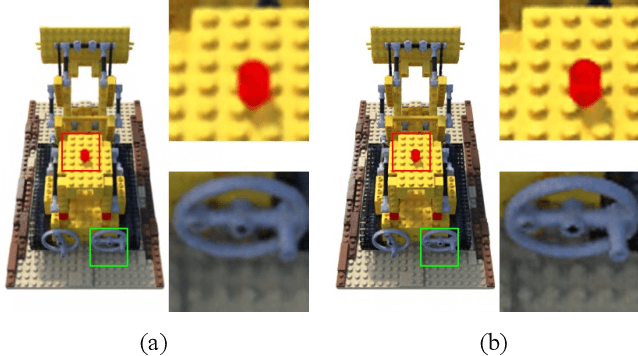

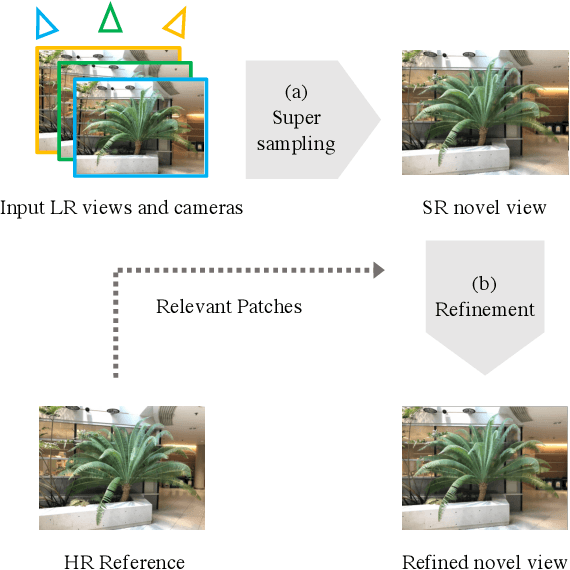
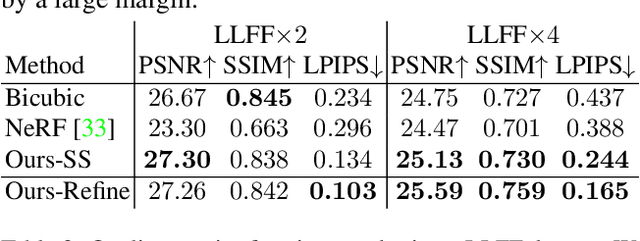
Abstract:We present NeRF-SR, a solution for high-resolution (HR) novel view synthesis with mostly low-resolution (LR) inputs. Our method is built upon Neural Radiance Fields (NeRF) that predicts per-point density and color with a multi-layer perceptron. While producing images at arbitrary scales, NeRF struggles with resolutions that go beyond observed images. Our key insight is that NeRF has a local prior, which means predictions of a 3D point can be propagated in the nearby region and remain accurate. We first exploit it by a super-sampling strategy that shoots multiple rays at each image pixel, which enforces multi-view constraint at a sub-pixel level. Then, we show that NeRF-SR can further boost the performance of super-sampling by a refinement network that leverages the estimated depth at hand to hallucinate details from related patches on an HR reference image. Experiment results demonstrate that NeRF-SR generates high-quality results for novel view synthesis at HR on both synthetic and real-world datasets.
CIRCLE: Convolutional Implicit Reconstruction and Completion for Large-scale Indoor Scene
Nov 25, 2021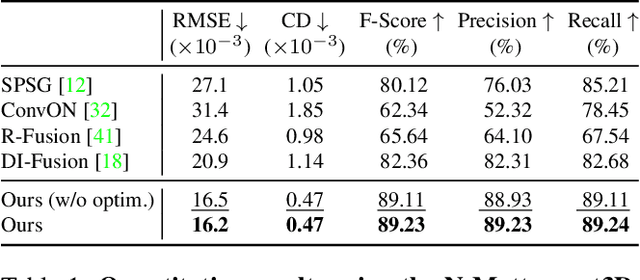
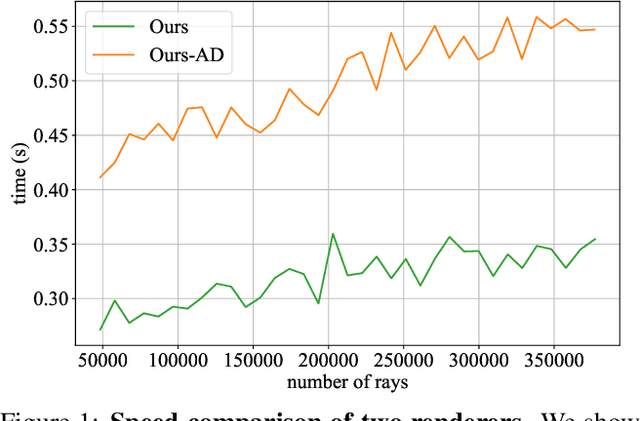

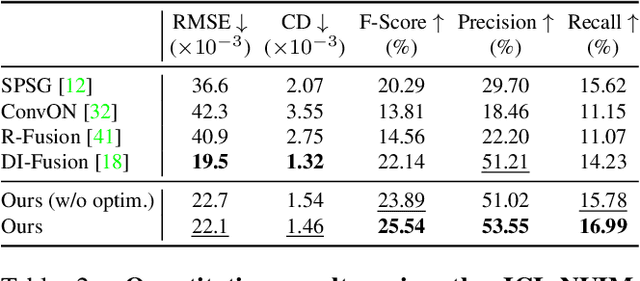
Abstract:We present CIRCLE, a framework for large-scale scene completion and geometric refinement based on local implicit signed distance functions. It is based on an end-to-end sparse convolutional network, CircNet, that jointly models local geometric details and global scene structural contexts, allowing it to preserve fine-grained object detail while recovering missing regions commonly arising in traditional 3D scene data. A novel differentiable rendering module enables test-time refinement for better reconstruction quality. Extensive experiments on both real-world and synthetic datasets show that our concise framework is efficient and effective, achieving better reconstruction quality than the closest competitor while being 10-50x faster.
 Add to Chrome
Add to Chrome Add to Firefox
Add to Firefox Add to Edge
Add to Edge